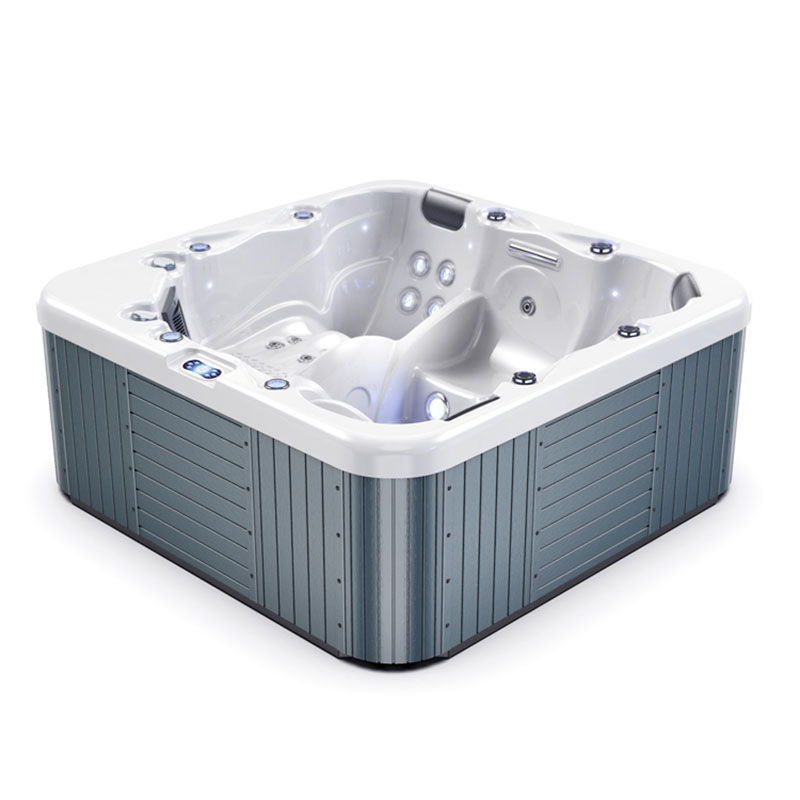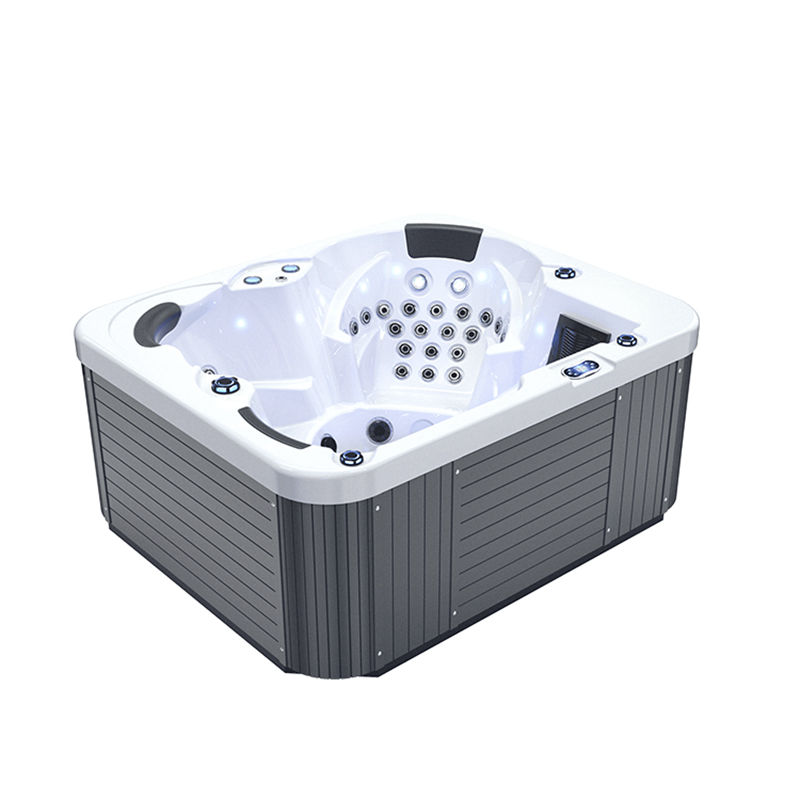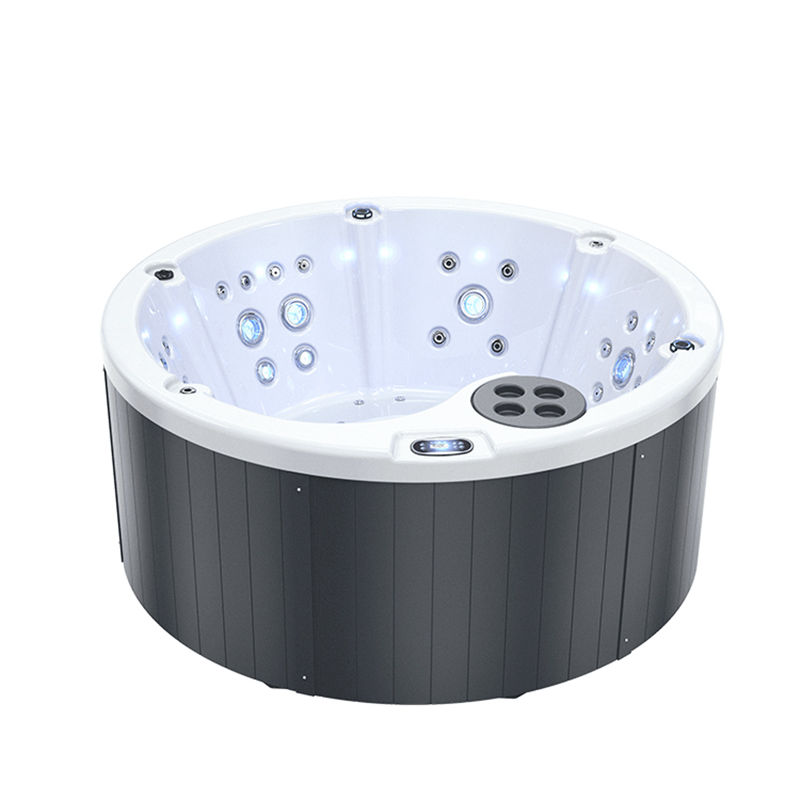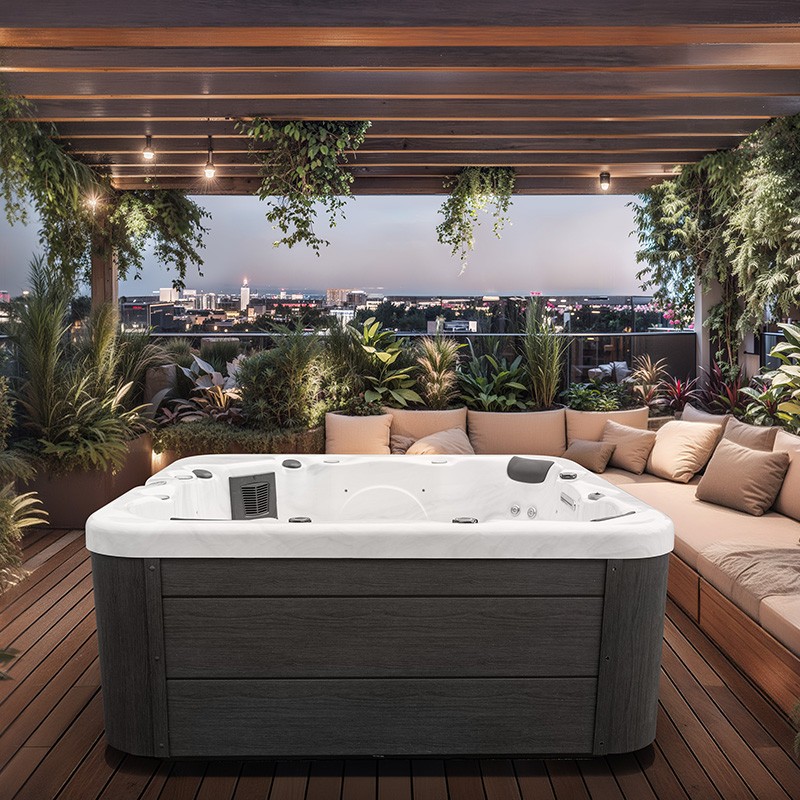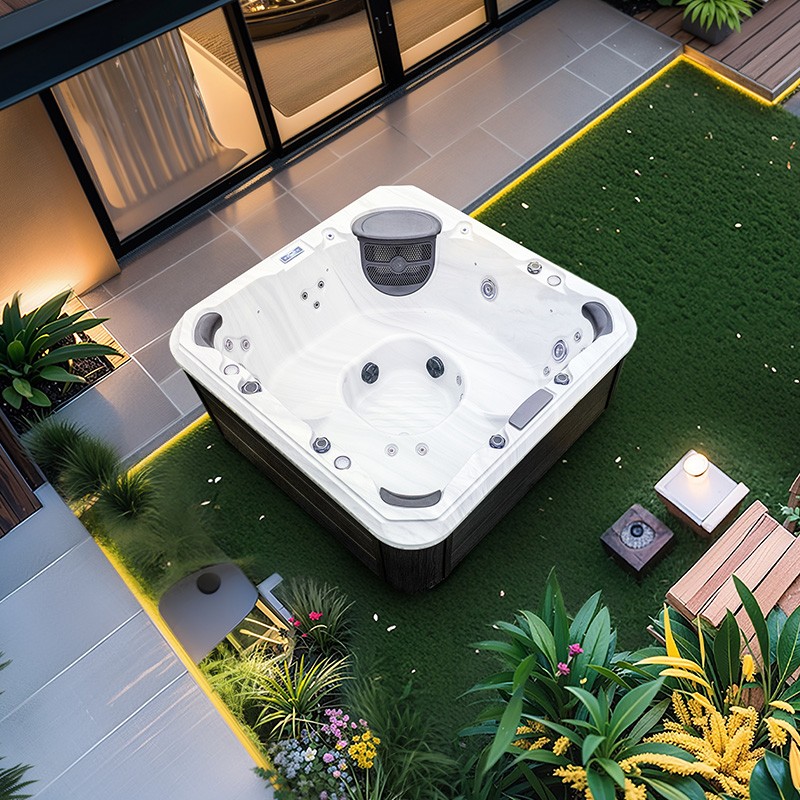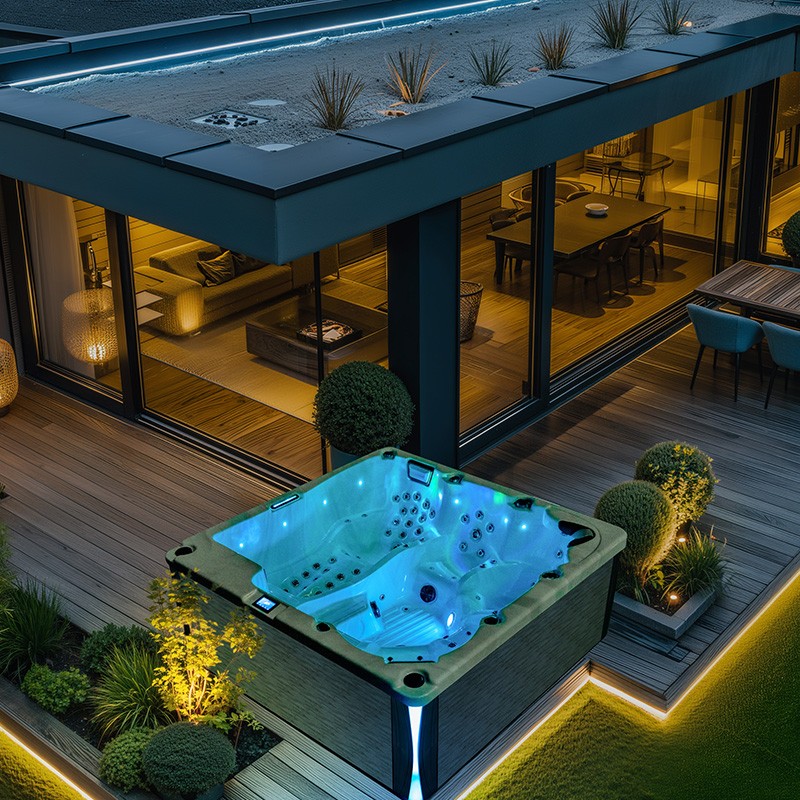With the accelerating pace of modern life, people's pursuit of health and quality of life continues to rise. Bathing has become more than just a means of cleansing the body; it has become an important way to relax and relieve stress. However, in recent years, spa hot tubs have gradually gained popularity. Compared to traditional baths, they offer significant differences in function, experience, and health benefits.
This article will examine the question "What's the difference between a spa hot tub and a traditional bath?" from multiple perspectives to help readers fully understand the differences.
Spa hot tubs and traditional baths: What's the difference?
1. What is a traditional bath?
A traditional bath involves immersing the body in hot water in a tub or basin, using the warmth to relieve fatigue. The core of a traditional bath lies in the benefits of hot water on the skin and superficial muscles, as well as the psychological relaxation provided by steam. The equipment is relatively simple, typically consisting of:
• A fixed or portable bathtub
• Hot and cold water pipes and faucets
• A simple drainage system
With a traditional bathtub, users rely on the temperature of the water and the duration of their soak to achieve relaxation. While this method is simple and easy to use, the bathing experience primarily focuses on superficial muscle and psychological relaxation, with limited benefits for deeper muscles and the circulatory system.
2. What is a spa hot tub?
A spa hot tub is a highly integrated bathroom fixture that not only provides a hot bath but also incorporates water massage, a bubble system, and constant temperature control. Key features of a spa hot tub include:
• Constant temperature system: Ensures the water temperature remains constant at the set value, preventing heat loss.
• Water jets: Stimulate muscles through the impact of water flow and improve blood circulation.
• Bubble massage: Uses micro-vibrations of bubbles to create a comfortable full-body massage experience.
• Multi-sensory experience: Some models include lighting and sound systems to enhance the psychological relaxation effect.
Compared to traditional baths, spa hot tubs are more than just a bathing tool; they offer a comprehensive hydrotherapy experience.
Spa hot tubs and traditional baths: Differences in water temperature and heat management
1. The impact of water temperature stability on the experience
Traditional baths rely on tap water or a heater, and the water temperature gradually decreases over time. To maintain a comfortable temperature, users often need to constantly add hot water or adjust the water temperature, which not only interrupts the bathing experience but also reduces heat utilization efficiency. During extended bathing, fluctuating water temperatures can affect relaxation and blood circulation.
A spa hot tub features built-in heating and thermostatic control systems, ensuring the set water temperature remains constant throughout the bath. This stable water temperature not only provides a long-lasting comfort but also promotes deep muscle relaxation and blood circulation, further enhancing the health benefits of bathing.
2. Different Heat Transfer Methods
Traditional bathing relies primarily on water temperature to transfer heat through the surface of the skin, leaving limited heat reaching deeper muscles and joints. Long-term soaking may only relieve superficial fatigue without effectively alleviating muscle soreness.
A spa hot tub combines water jets and air bubble technology, combining heat transfer with physical stimulation. The water pressure and micro-vibration of the bubbles promote heat penetration deep into the muscles, enhancing blood circulation and alleviating joint stiffness and muscle fatigue.
Spa hot tubs and traditional baths: Differences in massage functions
1. Traditional bath massage methods
In traditional baths, users need to manually knead their bodies or use tools such as massage brushes and massage pads to achieve a massage effect. The massage effect is highly dependent on individual technique, and the intensity and effectiveness are difficult to standardize. This massage method is often less effective for deep muscles or sore neck and shoulder areas.
2. Advantages of water massage in spa hot tubs
A spa hot tub's built-in adjustable jet system allows users to adjust the intensity and direction of the water flow according to their needs, achieving automatic massage for all body parts. The water jets precisely target the back, neck, shoulders, waist, and legs, relieving muscle tension, soreness, and joint stiffness. Simultaneously, the spa hot tub's bubble system uses micro-vibrations to comfortably massage the skin's surface, improving microcirculation and boosting metabolism.
This water massage not only provides deep relaxation but also enhances physical recovery, offering advantages unmatched by traditional baths.
Spa hot tubs and traditional bathing: Differences in health and physiological benefits
1. Impact on blood circulation and muscle fatigue
Traditional bathing primarily dilates blood vessels and improves superficial blood circulation through hot water, but has limited effect on relieving deeper muscle fatigue. Spa hot tubs combine constant-temperature hot water with water jets and bubble massage to provide a more comprehensive improvement in blood circulation. Scientific research shows that continuous hydromassage can promote venous return, reduce lower limb swelling, and accelerate the breakdown of lactic acid, alleviating post-exercise muscle soreness.
2. Mental health benefits
Traditional bathing relies primarily on the benefits of hot water and a quiet environment for psychological relaxation. Spa hot tubs, on the other hand, further reduce stress and anxiety through the multi-sensory stimulation of warmth, massage, water flow, and bubbles. Some high-end spa hot tubs also feature lighting and sound systems that use color and music to positively influence mental states. This comprehensive, soothing experience can help improve sleep quality and mental well-being.
Spa hot tubs and traditional bathing: Differences in ease of use and maintenance
1. Ease of use
Traditional baths are simple to use; simply fill with hot water and require little additional effort. Spa hot tubs offer a wealth of features, including jet intensity, water temperature adjustment, and bubble control, requiring basic user skills. While slightly more complex, the multifunctional experience far surpasses that of traditional baths.
2. Cleaning and Maintenance
Traditional bathtubs are easy to clean; simply wipe the interior with detergent. Spa hot tubs, however, have complex plumbing systems that require regular drain cleaning and nozzle and filter disinfection to prevent bacterial growth and malfunction. While maintenance is costly, it is crucial for health and functional integrity.
Spa hot tubs vs. traditional baths: Core differences in user experience
Overall, the core differences between spa hot tubs and traditional baths lie in the following areas:
• Versatility: Spa hot tubs combine constant temperature, massage, bubbles, and water circulation, while traditional baths offer only hot water immersion.
• Deep relaxation: Spa hot tubs utilize water flow and bubbles to stimulate deep muscles, while traditional baths primarily target superficial muscles.
• Health benefits: Spa hot tubs significantly outperform traditional baths in terms of blood circulation, muscle recovery, and mental well-being.
• Multi-sensory experience: A spa hot tub offers a comprehensive experience through heat, massage, bubbles, lighting, and music, while traditional bathing offers a more limited experience.
• Usage and Maintenance: Traditional bathing is simple to operate and has low maintenance costs; spa hot tubs offer complex functions and require high maintenance, but they provide a more comprehensive wellness experience.
How can I request a factory quote from LOVIA SPA?
To request a quote, buyers can contact LOVIA SPA directly with their specifications, quantities, and customization requirements. We provide competitive pricing, promotions, and bulk purchase discounts for outdoor spas, swim spas, and hot tubs.
Our products are CE, ETL, SAA, ROHS, REACH, and ISO9001 certified, guaranteeing high quality. LOVIA SPA ensures reliable shipping, professional after-sales support, and flexible purchasing options, making it a trusted supplier and manufacturer for both commercial and personal spa projects.


